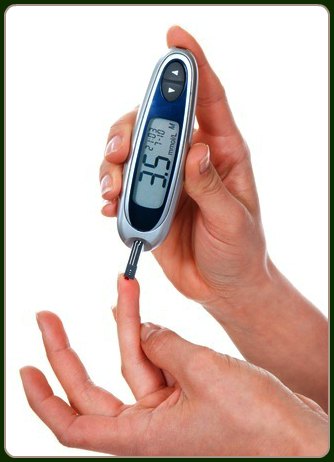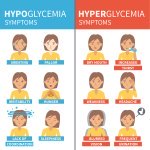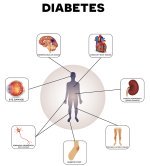Are Low Blood Sugar Levels Getting You Down?

Low blood sugar levels can cause a variety of unpleasant symptoms. The most common symptoms of low blood glucose are sudden, unexplained irritability and feeling ravenously hungry. More about that later. First, lets talk about actual measurable blood sugar levels and what they mean.
A normal fasting blood sugar level is considered 70-90 mg/dL (3.9 - 5.5 mmols/L). Doctors recommend that pregnant women keep their fasting blood sugars between 60-70 mg/dL (3.3 - 3.9 mmols/L). So, even though hypoglycemia (the clinical definition of low blood sugar) is often defined as having 70 mg/dL (3.9 mmols/L) or lower, you blood glucose really only becomes a life threatening emergency if it drops down to 50-55 mg/dL (2.8 - 3.1 mmols/L) or below. If your blood sugar drops down into the 20-30 mg/dL (1.1 - 1.7 mmols/L) for an extended period of time, you can become unconscious.
Not to worry, though, if you are not a diabetic injecting insulin, it is very unlikely that your blood sugar would drop this low unless you have a rare endocrine disorder.
The most common reasons you might suffer from low blood sugar levels:
- Your last meal was very high in carbohydrates and low in protein and healthy fats.
- You took too much medication
- You skipped a meal or two
- You ate less than normal
- You exercised more than usual
If you eat a meal full of simple sugars and starches without any healthy fats or proteins to slow digestion down, a huge amount of glucose will hit your bloodstream all at the same time around 30 minutes after you eat. In response, your pancreas will release alot of insulin in one or two waves to remove the sugar out of your blood and push it into your cells.
As a result of this process, your blood sugar will elevate quickly and then descend very quickly back to normal. When your blood sugar drops quickly, your brain may interpret this as a sign that you are heading for a dangerous low and release hormones that cause you to be ravenous in order to protect itself. You blood sugar doesn’t even have to drop into a hypoglycemic range for this to happen, it is the rate of descent which triggers this response.
If you typically eat a diet that causes your body to need to release large amounts of insulin to remove sugar from your blood, your insulin production may become compromised, meaning that you won’t release enough insulin or you may become insulin resistant meaning that the cells in your body won’t be as sensitive to insulin and will require larger and larger amounts of insulin before they let insulin escort the glucose out of your blood into your cells.
Either way, this delays your body’s insulin response and allows your blood sugar levels to shoot higher and stay higher before they come back down to normal. If you continue to eat meals high in sugar and starches, these swings may get larger and larger over time until you feel ravenously hungry most of the time.
Is it really low blood sugar levels?

Any time your blood sugar drops quickly you may experience symptoms of low blood sugar even when your blood sugar isn’t low. For example if your blood sugar rapidly dropped from 180 mg/dL down to 120 mg/dL after a carbohydrate laden meal. This situation typically happens when your blood sugar metabolism is compromised and your blood sugar levels shoot up higher than 140 mg/dL and then drop quickly back to more normal levels.
The only way to know if your blood sugar is truly below 70 mg/dL is to test your blood when you feel the symptoms. You can either do this on your own with blood glucose meter purchased over the counter or by having your doctor perform a blood test when you are feeling the symptoms.
How can you recognize low blood sugar in yourself?
Here are some symptoms that may indicate that you are experiencing low blood sugar levels. If you feel:
- Inexplicably Irritable
- Shaky
- Nervous
- Anxious
- Sweaty or have chills
- Feel unexpectedly angry
- Feel confused
- Your heart is beating rapidly unrelated to exercise
- You feel light headed or dizzy
- You feel really hungry or nauseous
- You are tired for no reason
- You vision is suddenly blurry
- You have a headache
- Your tongue or lips are suddenly tingly or feel numb
- You start feeling really clumsy
What symptoms can you see in others that indicate that they have low blood sugar?
Often people won’t realize that they have low blood sugar levels in the moment. Part of this may be due to the foggy thinking caused by low blood sugar. Here are some clues to help you recognize low blood sugar in your husband / wife, kids, family members and friends. The first is often the most common…
Have you ever noticed your husband or a good friend getting really grumpy if they haven’t eaten for a while and that their attitude miraculously improves after eating something? If you have friends that are diabetic, pay particular attention to the following signs of low blood sugar… it could make a huge difference especially if they are using insulin.
Clues of low blood sugar levels that you can see in others
- Inexplicably irritable, stubborn or bad tempered
- Sudden Anger, stubbornness, or sadness
- Start acting confused
- Complain that they feel dizzy or light headed
- Complain that they are ravenously hungry
- Complain that their vision is blurry
- Acting nervous or anxious all of a sudden
- Suddenly start sweating or complaining they are cold
- Complain that they have a headache
- Complain that they are tired, start acting sleepy when they shouldn’t be
- Unexplained lack of coordination, kids often will get clumsy or hurt one another by accident
- Kids in particular will get nightmares or cry out in their sleep
Supporting factors that may confirm that someone may be suffering from low blood sugar levels:
- It has been more than 3 hours since their last meal
- They have been performing intense physical exercise
- Their previous meal was full of simple sugars (fruit juice, table sugar) and simple starches (potato, white rice, pancakes) with minimal healthy fats and/or protein.
Examples of sugary / starchy meals include:
- Pancakes with syrup and fruit juice
- Packaged cereal with nonfat or lowfat milk and juice
- Cliff bar with Gatorade
- Hamburger with french fries with ketchup (typical patties are less than 1/4 lb of beef)
- Veggie lasagna
- Macaroni and cheese
You can protect your family members from having low blood sugar levels by lowering your consumption of starches (potatoes, white rice) and sugar (fruit juice, syrup, candy, other sweets). Instead include both healthy proteins (eggs, beef, chicken, fish) and healthy fats (coconut oil, fish oil, butter, lard) with every meal.



New! Facebook Comments
What do you think? Share your thoughts below...